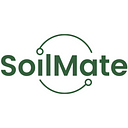Nitrogen & Phosphorus crisis in the modern Agriculture
We are all aware that soil is the bank account for the nutrients. So, when the crops take some nutrients out, we put some nutrients back in. And what happens if we will be putting in much more or fewer nutrients than crops need on an ongoing basis?
Why do Nitrogen and Phosphorus matter?
Nitrogen and Phosphorus — are two the most crucial fertilizers for Agriculture. They encourage rapid growth of the plant, increase the development of fruits, help with photosynthesis, energy transfer, and the exchange of genetic characteristics between the species.
However, there is a critical issue with one of them, which we will experience soon.
If nitrogen fertilizers are produced in the factories and require renewable resources, phosphorus production is more challenging. The minerals are mined from the phosphate rocks from the United States, China, and Morocco. This North African country claims near to 75% of the world’s phosphorus minerals. By the estimates, these sources may be exhausted by the end of the century. Another calculation predicted the lack of rock phosphorus as early as 2030. A few other locations have phosphorus deposits, but they contain fewer resources and are harder to reach.
What is the issue of excessive application beyond the crop’s demand?
Indeed, we know about the beneficial influence of the nutrients, but the root cause of the current nitrogen and phosphorus crisis is their excess in soil.
Soils are the worst place to store nutrients, and that is why:
- overfertilization can lead to a long-term decrease in harvest, making plants weaker and vulnerable to diseases;
- the permanent contribution of chemical fertilizers in overdose increases soil acidity that causes soil infertility making the soils unsuitable for further use;
- contamination of water supplies of nitrates from soils causes harmful effects on human health and livestock;
- waters in the soils are more likely to move the nutrients away from the roots to somewhere else (atmosphere). On average, this cycle from primary fixation back to the atmosphere as the dinitrogen process takes about 500 years for soil nitrogen.
Despite the high chemical fertilizer input, the planet’s soils are depleted in Phosphorus. Moreover, agricultural soils are expected to be exhausted shortly because of the shortage of Phosphorus minerals.
There are just a few issues related to soil health, but numerous global environmental problems are caused by utilizing fertilizers in a large quantity to increase crop production.
How is the confluence of capital, innovation, and knowledge coming together to facilitate higher nutrient use efficiency?
Nutrient use efficiency is the fundamental challenge facing the agrochemical industry and agriculture overall.
Nowadays, opportunities are developed, and precision applications have enough potential to produce solutions that can solve challenging environmental issues. They make us way smarter how to deliver nutrients more accurately in the growing season — we are able to optimize the plant needs without an overapplying of chemicals, but with boosting the productivity of crops.
The fertilizer industry used to be supported with recommendations for the right amount of supplements to manage nutrient use efficiency.
Conclusion
Every innovation by the participant in the AgriTech industry can help drive the next step forward.
By adopting precision agriculture technologies, companies are more willing to make production easier and safer for the future.
Now we have a problem of fertilizer overproduction among manufacturers. The potential balance of chemical fertilizer is descended from the supply amount minus the total demand.
According to the report of the Food and Agriculture Organization,report, in 2015, this figure was 20 thousand tonnes. The number of the previous year is more than 25 thousand tonnes of excess chemicals.
SoilMate has a solution for this issue.
Our precision analytics delivers insights regarding market demand to avoid difficulties with chemical waste management.
The application predicts the accurate volume of fertilizers needed for specific areas and crop species.
Agrochemical Companies bear the primary responsibility for using nutrients, so the future of these companies is impossible without implementing innovations in their processes.
We hope that the future will be about new opportunities and technologies, better performance, and sustainable solutions.
